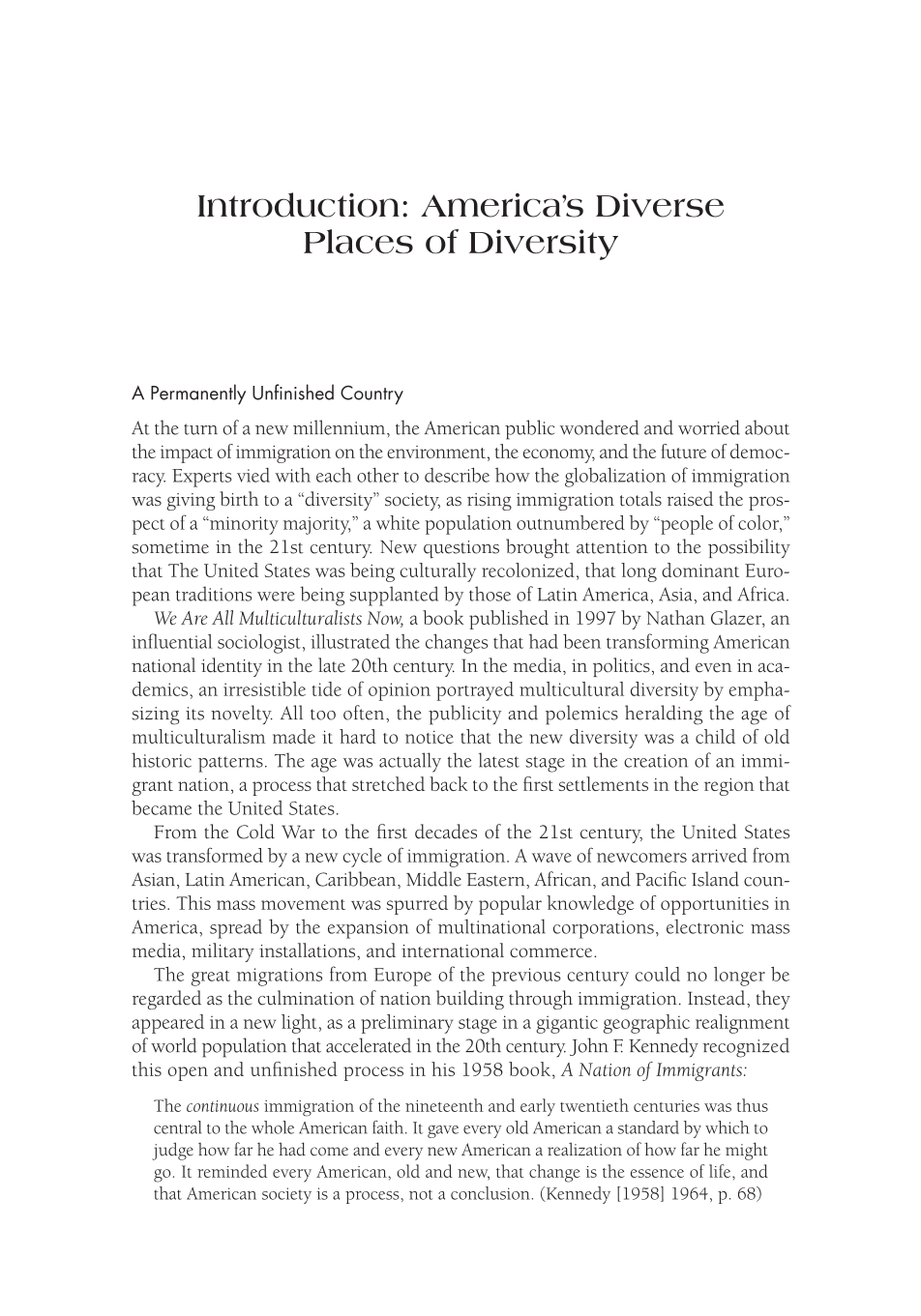Introduction: America’s Diverse
Places of Diversity
A Permanently Unfinished Country
At the turn of a new millennium, the American public wondered and worried about
the impact of immigration on the environment, the economy, and the future of democ-
racy. Experts vied with each other to describe how the globalization of immigration
was giving birth to a “diversity” society, as rising immigration totals raised the pros-
pect of a “minority majority,” a white population outnumbered by “people of color,”
sometime in the 21st century. New questions brought attention to the possibility
that The United States was being culturally recolonized, that long dominant Eu ro
pean traditions were being supplanted by those of Latin Amer i ca, Asia, and Africa.
We Are All Multiculturalists Now, a book published in 1997 by Nathan Glazer, an
influential sociologist, illustrated the changes that had been transforming American
national identity in the late 20th century. In the media, in politics, and even in aca-
demics, an irresistible tide of opinion portrayed multicultural diversity by empha-
sizing its novelty. All too often, the publicity and polemics heralding the age of
multiculturalism made it hard to notice that the new diversity was a child of old
historic patterns. The age was actually the latest stage in the creation of an immi-
grant nation, a process that stretched back to the first settlements in the region that
became the United States.
From the Cold War to the first decades of the 21st century, the United States
was transformed by a new cycle of immigration. A wave of newcomers arrived from
Asian, Latin American, Caribbean, Middle Eastern, African, and Pacific Island coun-
tries. This mass movement was spurred by popular knowledge of opportunities in
America, spread by the expansion of multinational corporations, electronic mass
media, military installations, and international commerce.
The great migrations from Europe of the previous century could no longer be
regarded as the culmination of nation building through immigration. Instead, they
appeared in a new light, as a preliminary stage in a gigantic geographic realignment
of world population that accelerated in the 20th century. John F. Kennedy recognized
this open and unfinished process in his 1958 book, A Nation of Immigrants:
The continuous immigration of the nineteenth and early twentieth centuries was thus
central to the whole American faith. It gave every old American a standard by which to
judge how far he had come and every new American a realization of how far he might
go. It reminded every American, old and new, that change is the essence of life, and
that American society is a process, not a conclusion. (Kennedy [1958] 1964, p. 68)















































































































































































































































































































































































































































































































































































































































































































































































































































































































































































































































































































































































































































































































































